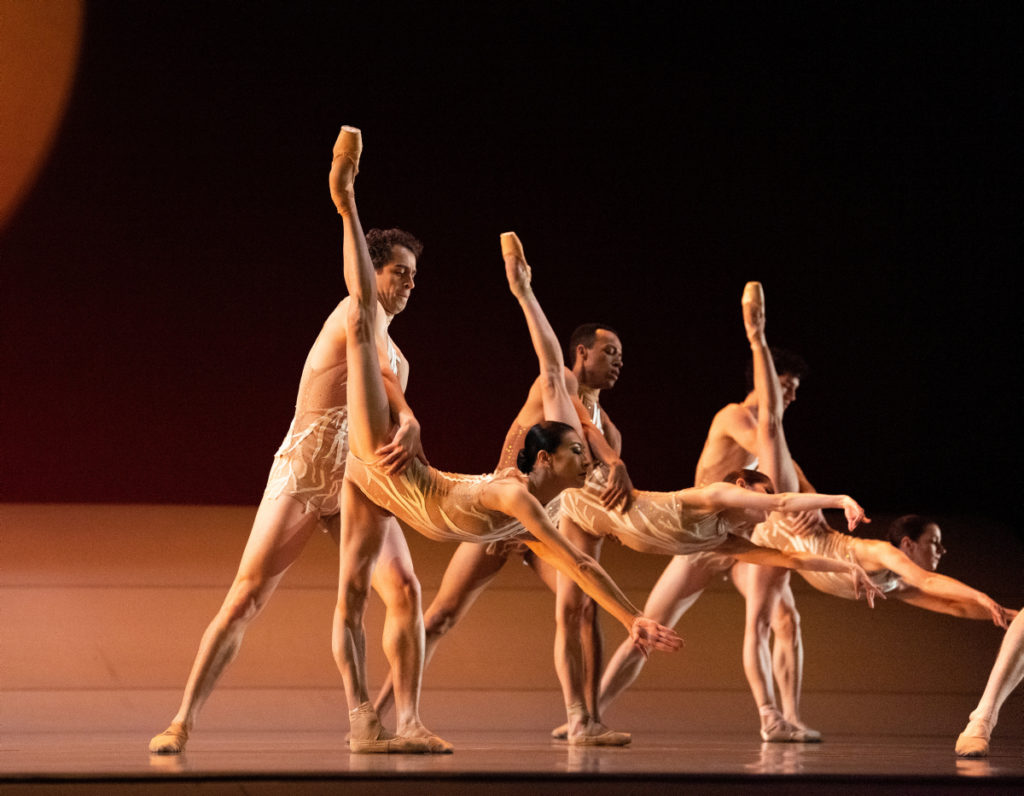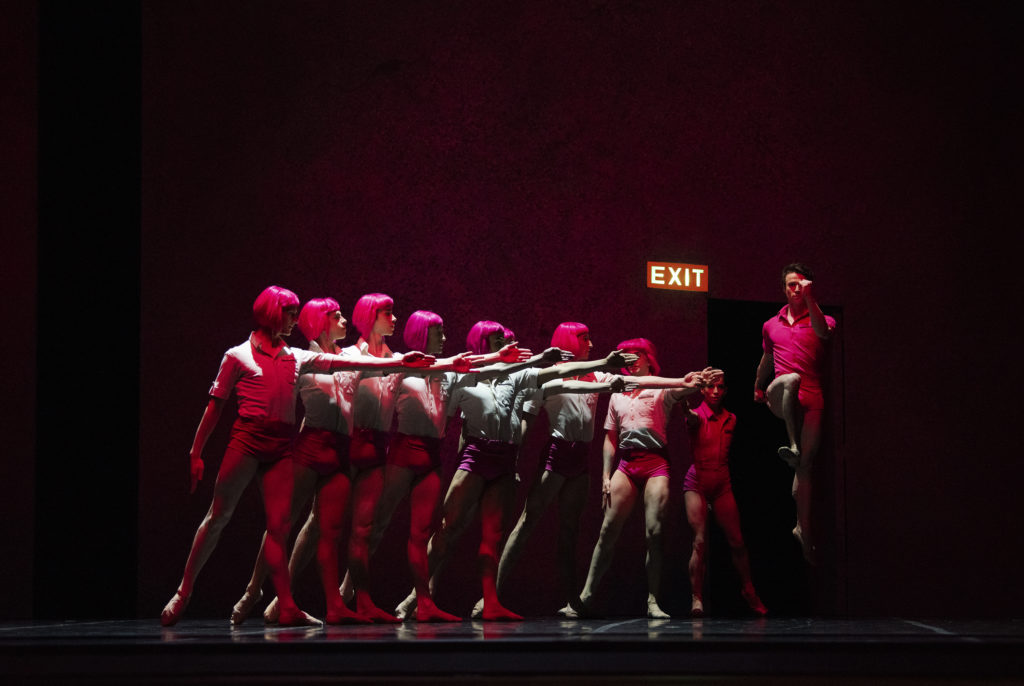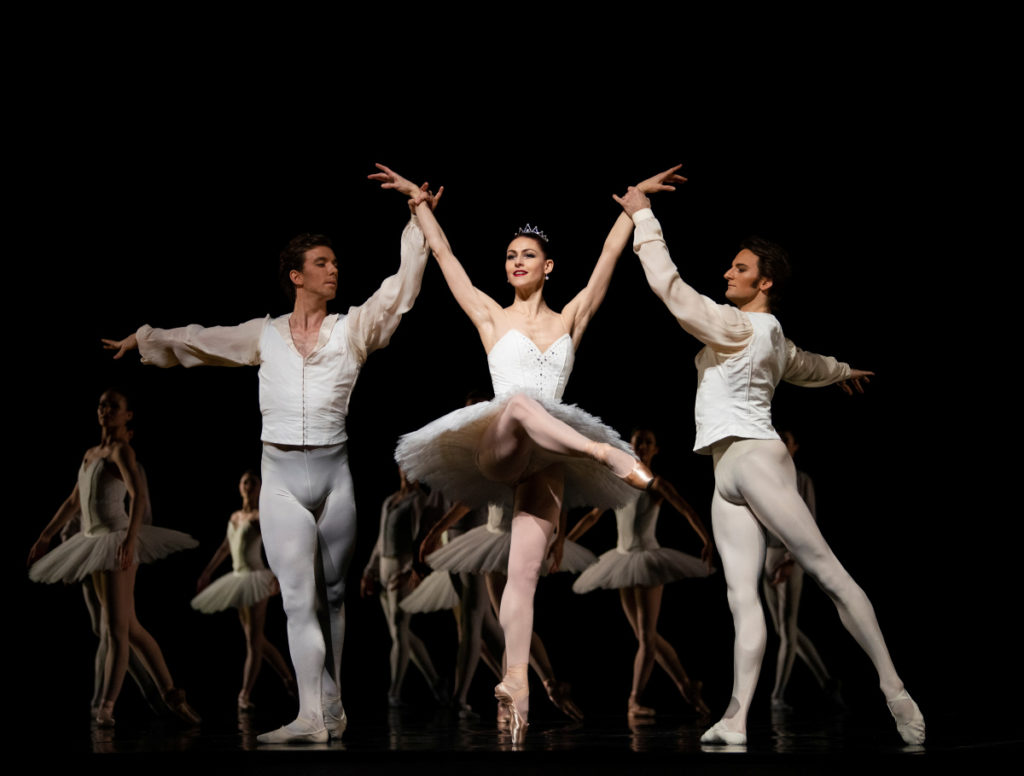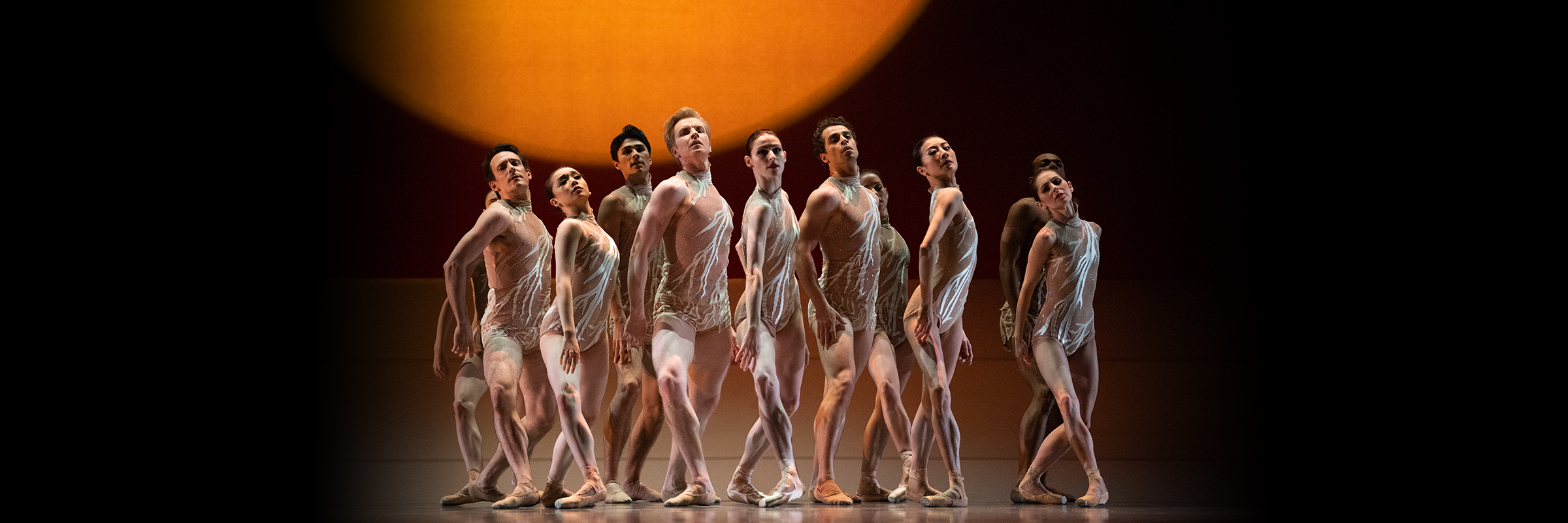Your Ultimate Guide to Dance Innovations
Light installations. Pink wigs. White tutus—Program 03 has everything.
What Is It? An evening of ballet that shows the art form in all its facets: emotional, philosophical, and, well, pure delight. From light installations to pink wigs to classic white tutus, Dance Innovations has something for everyone.
Who’s It For? Anyone who loves artist Olafur Eliasson, likes puzzling over conceptual ideas, or is just a fan of pure pomp and circumstance.
THE INFINITE OCEAN

What Am I Seeing? The latest piece for SF Ballet by BalletMet Artistic Director Edwaar Liang. Created for the 2018 Unbound Festival, The Infinite Ocean explores the liminal space between life and death. Full of complex partnering and deep emotions, this ballet was a favorite among audience members both when it premiered here and on tour in Washington D.C. and London.
What Am I Hearing? A violin concerto by London-based composer Oliver Davis, written in 2018. Davis’s work is being used more and more often by ballet choreographers, including Ma Cong, Peter Walker, and Matthew Neenan.
What Should I Look For? The central pas de deux: sometimes the trickiness in ballet partnering is making it look simple. That’s not the case here. The partnering is just as complex as it looks as the dancers cantilever themselves into Alexander Calder-like shapes.
THE BIG HUNGER

What Am I Seeing? Acclaimed choreographer Trey McIntyre returns to SF Ballet with his world premiere The Big Hunger. Known for often working with pop music, this ballet is a departure for Trey, as he taps into his musical background to explore a classical score by Sergei Prokofiev. But Trey’s dances are rarely solely about the music, and in this case, he’s also playing with some philosophical concepts. Specifically, he’s thinking about the things that give life meaning and the things we sometimes think are meaningful, but really aren’t.
What Am I Hearing? Sergei Prokofiev Piano Concerto no. 2, written in 1913 and revised in . It’s one of the most difficult pieces to play in the piano repertoire and (as far as I know) has never been used before in a ballet.
What Should I Look For? This ballet is divided into three sections, each featuring a principal couple. These three sections and three couples each represent a different stage toward enlightenment—notice how those relationships are distinct, notice how the sets change between sections, and notice how each couple moves and partners differently.
ETUDES

What Am I Seeing? Choreographed in 1948 by Danish choreographer Harald Lander, Études is an ode to classical ballet’s history and form. A series of studies, or “études,” this ballet puts its dancers through their paces. Beginning with exercises at the barre, then foraying into ballet’s Romantic Era past, the ballet ends with a spectacular display of virtuosity and technique.
What Am I Hearing? A variety of piano études by Carl Czerny, arranged and orchestrated by Knudaage Riisager. These piano pieces were created to challenge and train students, making them a clever match for a ballet about ballet training.
What Should I Look For? The central ballerina who flits in and out throughout the ballet, sometimes in a short, classical tutu and sometimes in a longer, Romantic-era one. And for the way that the steps you see later in the ballet—the jumps and turns—relate to the earlier exercises you saw at the barre. If you can make that connection, it may well change how you watch all ballets.
Header image: San Francisco Ballet in Liang’s The Infinite Ocean // © Erik Tomasson








